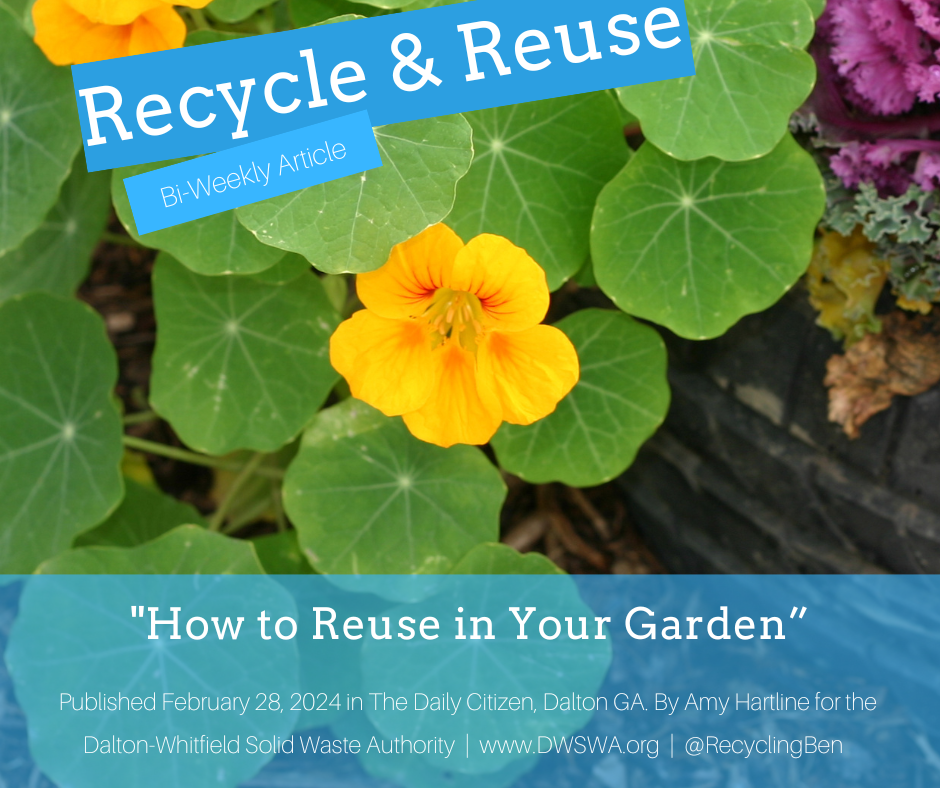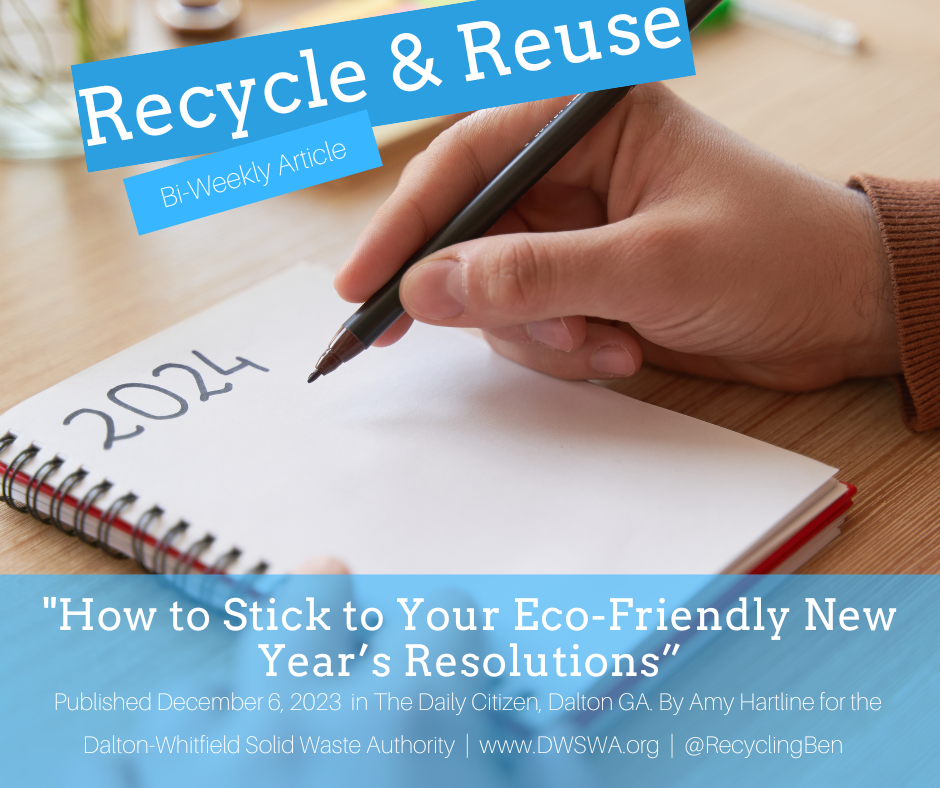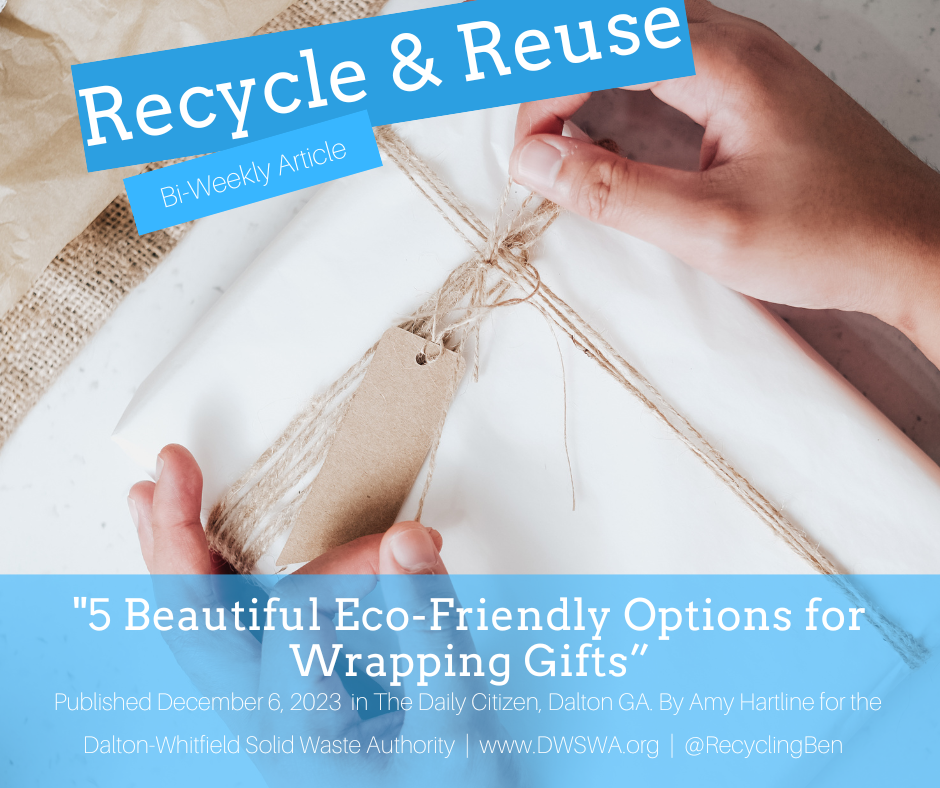How You Can Help Reduce Food Waste
/(Published on Wednesday, September 23, 2015, in The Daily Citizen newspaper, Dalton, GA.)
Recycle & Reuse: How You Can Help Reduce Food Waste
Help reduce food waste and feed people not landfills by rethinking how you manage leftovers.
As the global population continues to grow, so does the need for food waste reduction. On September 16, Agriculture Secretary Tom Vilsack and Environmental Protection Agency Deputy Administrator Stan Meiburg announced the United States' first-ever national food waste reduction goal, calling for a 50 percent reduction by 2030.
"The United States enjoys the most productive and abundant food supply on earth, but too much of this food goes to waste," said Agriculture Secretary Tom Vilsack. "An average family of four leaves more than two million calories, worth nearly $1500, uneaten each year. Our new reduction goal demonstrates America's leadership on a global level in getting wholesome food to people who need it, protecting our natural resources, cutting environmental pollution and promoting innovative approaches for reducing food loss and waste."
Purchasing ugly fruits and vegetables helps reduce food waste by allowing produce that is not exactly the perfect color to be consumed and not landfilled.
According to the official press release from the USDA (United States Department of Agricultre), “Food loss and waste in the United States accounts for approximately 31 percent—or 133 billion pounds—of the overall food supply available to retailers and consumers and has far-reaching impacts on food security, resource conservation and climate change. Food loss and waste is single largest component of disposed U.S. municipal solid waste.”
This means a whole lot of food is ending up in the landfill. If we look at the composition of our waste, especially residential or household waste, we’ll find that one-third to one-half of what we throw away is food. “Let’s feed people, not landfills,” EPA (Environmental Protection Agency) Administrator Gina McCarthy said of the announcement. How do we do that? Like many things related to managing our waste, it starts at home. As you take a closer look at your food choices you’ll probably find yourself saving money too.
One of the first steps to reducing waste is to plan your meals before going shopping so you can buy only those things on the menu. While shopping purchase only what you realistically need and will use. For example, if a recipe calls for five potatoes, purchase only five from the loose produce section instead of a large three to five pound bag with potatoes you may or may not use in the future. If your favorite grocery store has a self serve bulk foods section then you can buy just the exact amount dry goods you need. Oats, rice, beans and more can be purchase in small and large quantities by the pound.
While you’re in the produce section don’t be afraid to buy funny looking produce, those fruits and veggies that no one will buy because their size, shape, or color isn’t quite like the others. For the most part this ugly produce is perfectly good to eat and doesn’t need to be thrown away. Visit www.endfoodwaste.org or follow @uglyfruitandveg on Instagram and Twitter to join a community of people who support eating ugly food to reduce food waste. Users have shared photos of two color fruits and misshapen veggies like two carrots wrapped around each other.
At home monitor your food waste to find areas where you can cut back. If you find that you are throwing out half a casserole then you’re making too much at a time and should either make less or freeze the leftovers. When unpacking groceries move the older products to the front of the refrigerator or pantry and place the new items in the back. This will help you use up the older food reducing the likely hood that you’ll find something rotting that needs to be thrown away. This is also a good time to check expiration dates on food so you know which to eat first.
More than half of food thrown away at home tends to be leftovers because too much food was prepared. Sometimes when leftovers are stored for later consumption they never make it out of the fridge. Instead of serving the same dish rework the ingredients to be part of a whole new meal. For example, left over breakfast sausage could be chopped and used in pasta with a creamy sauce. Stale bread can be used to make French toast or bread pudding. Leftover chicken can be used make chicken stock, and steak to make beef stew.
If you have food stored at home that you will realistically never use, consider donating it before throwing it away. It’s best to call ahead to find out what types of food a local charity, food bank, for food rescue programs accept. Some may only accept canned goods or dry foods such as canned chicken, powdered milk, canned tuna, saltine crackers, canned vegetables, rice, juice, jelly, and cereals.
Liz Swafford is the Recycling and Education Program Coordinator for the Dalton-Whitfield Solid Waste Authority. Learn more about recycling in Whitfield County by visiting www.DWSWA.org or call 706-278-5001.

































